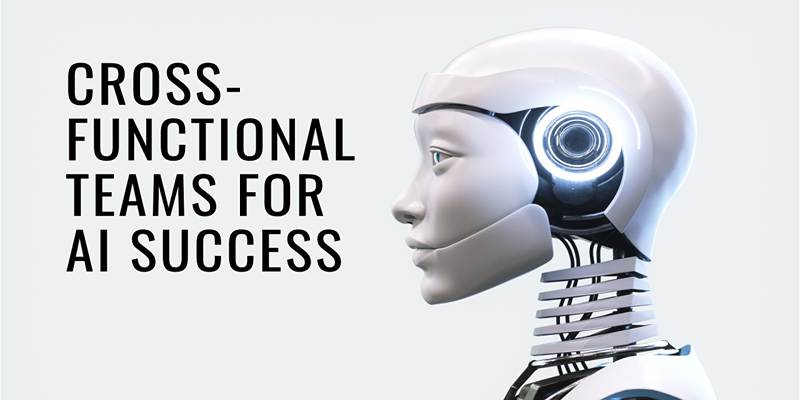As artificial intelligence continues to transform business operations across industries, more organizations are investing in tools, systems, and talent to keep up with the pace of change. However, one fundamental question still challenges many executives—who should be responsible for AI strategy in the company?
The answer isn’t always obvious. AI strategy doesn’t fit neatly under a single department, and its successful implementation often requires coordination across technology, operations, and leadership. Therefore, choosing the right individual or team to own an AI strategy can be the difference between scalable success and scattered experimentation.
The Importance of a Clear AI Strategy
Before assigning ownership, businesses must understand why an AI strategy is essential. Artificial intelligence is more than automation or analytics—it has the potential to reshape how organizations innovate, serve customers, and compete in the market.
A clear AI strategy provides:
- Alignment with business goals
- Guidance on ethical data use and compliance
- A roadmap for investment in tools and talent
- Long-term planning for AI integration across departments
- Risk mitigation, especially concerning bias, data leaks, or over-reliance
Without strategy, AI projects may become siloed experiments that deliver limited value or result in duplicated efforts across departments.
What Makes a Good AI Strategy Leader?
The individual or group tasked with leading AI efforts should bring more than technical knowledge. AI leadership requires a blend of business awareness, communication skills, and the ability to manage change. The leader must:
- Understand how AI aligns with company objectives
- Communicate benefits and challenges clearly to stakeholders
- Lead or collaborate across functions
- Encourage ethical practices and responsible innovation
- Adapt quickly to new tools, trends, and risks
This role may be best filled by an executive who already holds decision-making power or a cross-functional leader with the authority and insight to oversee multiple departments.
Who Should Own the AI Strategy? Examining the Candidates
In practice, several roles within an organization could potentially take charge of the AI strategy. The right choice often depends on the company’s size, maturity level, and industry focus.
Chief Executive Officer (CEO)

For startups or early-stage companies, the Chief Executive Officer often takes the lead in shaping the business strategy. If AI is a core component of the product or operations, it makes sense for the CEO to also own the AI vision.
Advantages:
- Strong understanding of business priorities
- Power to drive cultural and structural changes
- Can align AI with an overall strategy
Limitations:
- Limited bandwidth for technical oversight
- May lack a deep understanding of AI technologies
Chief Technology Officer (CTO)
In technology-forward organizations, the CTO may be best suited to own an AI strategy. Their familiarity with existing systems and digital infrastructure allows them to assess what tools or platforms are best suited for AI adoption.
Advantages:
- Technical expertise and system knowledge
- Experience managing engineering or development teams
- Ability to plan AI integrations from an IT perspective
Limitations:
- Might focus more on execution than business outcomes
- May prioritize efficiency over ethical or human impact considerations
Chief Data Officer (CDO)
For companies where data is central to operations, the CDO can play a pivotal role. Since effective AI relies on quality data, data governance, and analytics capabilities, the CDO may be in the best position to lead AI initiatives.
Advantages:
- Strong background in data quality and structure
- Familiar with compliance, privacy, and ethical use of data
- Can manage AI models and datasets effectively
Limitations:
- May lack cross-departmental leadership experience
- Might not be empowered to drive company-wide transformation
Chief AI Officer (CAIO)
Larger enterprises with mature AI ambitions often appoint a Chief AI Officer—a role entirely dedicated to AI strategy, innovation, and integration. This role bridges business, data science, and technical leadership.
Advantages:
- Deep understanding of AI technologies
- Dedicated focus on long-term AI development
- Acts as a single point of ownership across business units
Limitations:
- Not common in small to medium-sized businesses
- It can be expensive or difficult to hire
The Case for a Cross-Functional AI Committee

In organizations without a single clear leader, many businesses choose to assign AI strategy to a cross-functional team. This team may include representatives from IT, operations, marketing, HR, and data analytics. Together, they can form an AI steering committee with shared responsibilities and centralized oversight.
This model works well when:
- AI is expected to impact several departments
- Internal collaboration is strong
- No single executive holds all the required expertise
Key benefits:
- Balanced perspectives from different departments
- Better alignment between technical and business needs
- Shared ownership leads to stronger buy-in across teams
However, one person should still act as the chair or coordinator of this committee, ensuring decisions are made and strategy stays on track.
Key Responsibilities for the AI Strategy Leader
Regardless of who owns the AI strategy, the role involves specific duties that drive progress and accountability.
These include:
- Setting measurable AI goals that align with business strategy
- Evaluating current tools, infrastructure, and data readiness
- Creating a clear roadmap for adoption and integration
- Managing risks, including bias, ethics, and data privacy
- Advocating for employee upskilling and change management
By defining responsibilities clearly, the organization ensures that AI initiatives are not only well-planned but also sustainable in the long run.
Conclusion
Establishing an AI strategy without clear leadership often leads to scattered projects, budget waste, and slow results. To avoid these pitfalls, businesses must choose someone—or a team—with both the authority and the insight to guide AI adoption from pilot projects to full integration. Whether it’s the CEO, CTO, CDO, or a cross-functional team, the most important factor is that someone is clearly accountable. That person or team should align AI goals with the company’s mission, evaluate progress continuously, and adapt the roadmap as needed.










